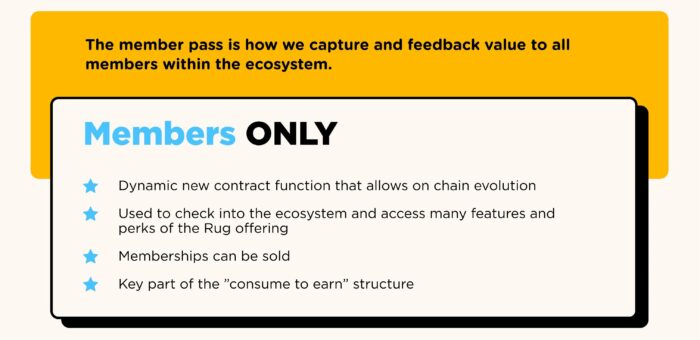Lots has modified within the NFT house over the previous yr. Whereas in 2021, nonfungible tokens completely exploded, in 2022, Web3 noticed the maturation of the NFT house fast-tracked due to a bear market. Certain, artists nonetheless discovered methods to maintain themselves, and NFT collectors developed into distinguished Web3 builders, however the wild west that was the NFT market cooled off considerably.
After all, this isn’t a foul factor. Removed from it, in truth. Whereas quite a few buyers and influencers shortly grew to become quiet when the million-dollar earnings stopped coming in, the NFT house as a complete was propelled ahead. Collectibles and large-scale PFP initiatives that had a maintain available on the market began to wane, and different usually overshadowed use circumstances started to hit stride.
However we’re not simply speaking about Sound.xyz music NFT secondary gross sales crossing $5 million, or pictures NFT editions going viral. Whereas these are undoubtedly main wins for artists, developments in blockchain expertise and a crossover from Web2 to Web3 have helped solidify a variety of sturdy NFT use circumstances that may have the potential to alter the metaverse as we all know it. In 2023, these rising sectors will undoubtedly be worthy of maintaining a tally of.
Ticketing & proof of attendance
Maybe some of the underrated sectors of the NFT market is NFT ticketing. Thought-about by many to be of nice profit to the way forward for stay occasions, NFT ticketing is exactly what it seems like: tickets within the type of an NFT dwelling on a blockchain that act as entry passes for any stay (and even digital) occasion.
With NFT tickets, ticket issuers and recipients can profit in a number of methods. Issuers can hold a extra in-depth document of attendance numbers by using the blockchain as a ledger, whereas concurrently interacting with ticket holders in a brand new and revolutionary method by way of NFTs. Issuers can ship out notices, host shock giveaways, create token-gated websites and companies, and extra just by collating information related to holders of a selected NFT ticket.

On the flip facet, attendees of occasions that don’t subject NFT tickets will also be rewarded after the actual fact. With POAP, the Proof of Attendance Protocol, customers can create and subject commemorative badge-style NFTs that may present lots of the identical utilities as NFT ticketing. Customers usually solely must scan a QR code or enter a selected phrase to gather a POAP, making the barrier of entry considerably low and accessible to those that aren’t versed in blockchain tech.
Whereas NFT ticketing and POAPs could merely appear to be a enjoyable incentive for occasion attendees, they’ve continued to show helpful to challenge founders to maintain information of early supporters. It wouldn’t be a stretch to say that each NFT tickets and POAPs are serving to change the way in which we take into consideration fandom in Web3.
Membership passes
Whereas it’s true that NFT-based memberships grew and developed alongside PFP initiatives, they’ve since grow to be their very own distinctive sector of the NFT market. Largely utilized by manufacturers and packages, all these NFTs act as entry keys to unlock incentives and rewards for those who maintain them. Oftentimes, NFT memberships are enforced by way of “token-gating,” which makes use of blockchain tech to confirm possession of an NFT and grant holders entry to no matter member-exclusive perks are on supply. This may be carried out in Discord servers, at in-person or digital occasions, and extra.
One of many earliest examples of NFT memberships is the Bored Ape Yacht Membership. Simply by proudly owning a BAYC NFT, holders have been granted entry to merch drops, music festivals, subsequent NFT releases, and a lot extra. Initiatives like LinksDAO, LoudPunx, and Flyfish Membership stay two of essentially the most bold membership endeavors, whereas platforms like Buddies With Advantages and OneOf have grow to be archetypes for organizations seeking to launch membership passes.
Some NFT endeavors have even gone above and past the concept of a easy membership go, bringing shared possession and voting into the combination. Take Rug Radio, for instance. Created by distinguished influencer and builder Farokh to be a decentralized Web3 media platform, the challenge’s ethos is to be by the neighborhood and for the neighborhood as a platform owned by its customers. Due to this, Rug Radio issued Membership Cross NFTs, which grant their holders the power to vote on proposals and take part in main choices. In a dystopian future, maybe even basic elections could possibly be dealt with by way of Soulbound Token (SBTs) connectivity on the blockchain.

Everlasting information
If that dystopian future had been to come back about, the primary main NFT use case we might encounter would seemingly be NFTs used to handle everlasting information. As a substitute of counting on irrevocable longevity to legitimize property and capital, or safekeeping susceptible paper information to go down by means of the generations, SBTs might present us with a greater solution to confirm necessary data.
And possession information are however a single perform of those NFTs proposed by Ethereum Co-Founder Vitalik Buterin. Designed to perform as a complete suite of instruments for on-line customers on-line to protect and shield their id, ought to SBTs launch as deliberate, they stand to considerably influence our on a regular basis lives — each on-line and offline. Via SBTs, medical information, educational information, employment histories, and all the pieces in between could be minted as an NFT with immutable and non-transferable possession.
Whereas it’s true that SBTs may not be potential at scale till a decentralized society could be achieved, proof is mounting that they may grow to be a actuality in 2023. However, the place? Nicely, in addition to Buterin himself alluding to the chance that they may (have been) carried out by late 2022, firms like Moonpay have already introduced endeavors in the identical vein as SBTs. Maybe it’s solely a matter of time until we see the primary real-life use case achieved.
Bodily x digital
In 2022, the NFT house witnessed the rise of “phygital” items. Characterised as a melding of bodily and digital, phygital has constructed yet one more layer upon the idea of digital possession, permitting artists and builders to show their bodily creations into NFTs, and vice versa. Though the time period phygital itself has garnered opposition as a result of its abrasive phonetics and primary portmanteau nature, the recognition of such merchandise is plain.
Phygital items exist in a wide range of kinds. From toys to collectibles and much more conventional types of artwork like sculpture and work, the road between bodily and digital continues to dissolve for Web3 creators. But, some of the fashionable use circumstances to emerge from this new market sector has been wearables. That is maybe finest illustrated by firms like 9dcc and RTFKT, who proceed to supply NFT-powered footwear, shirts, and different trend objects.
And whereas phygital items sound a bit futuristic, digital items wearables have lengthy existed by means of video video games like Fortnite. The truth is, Fortnite skins had been what first impressed 9dcc founder Gmoney to enterprise into digital collectibles within the first place, as he noticed the potential of digital possession and the significance of that potential being understood by future generations. If funding giants like him, and trend powerhouses like Nike are holding their eye on phygital, the remainder of Web3 could be good to do the identical.
Synthetic intelligence
Prefer it or not, synthetic intelligence is right here, and seemingly right here to remain. From instruments like ChatGPT proliferating in almost each trade to AI-generated artwork changing into a scorching and contentious subject amongst on-line communities, the AI growth we’re experiencing now feels akin to, if not larger than, the preliminary NFT growth of 2021.
But, AI virtually undoubtedly can have a bigger attain and influence on basic society than even NFTs can muster right now. After all, this additionally contains its influence on Web3. The truth is, quite a few distinguished artists within the NFT house already use AI collaboration of their workflows. However it isn’t as a result of newest AI growth — reasonably, it’s as a result of digital nature of the NFT house basically, the place builders, artists, and coders converge. So why ought to we be monitoring AI in 2023?
Nicely, as a result of it has superior so considerably in simply the previous yr. With the arrival of DALL-E, ChatGBP, and different instruments, the ethics of making and promoting AI artwork has been referred to as into query. Whereas many critics worry the brand new paradigm of AI artwork, others have embraced it as inevitable. Besides, AI-created work presently lacks the “human authorship” wanted to bestow rights supposed to guard the artist. A slippery slope, certainly.
What else?
Impartial of earnings and hypothesis, the 5 use circumstances listed above are undeniably distinguished throughout the NFT house as we enter into 2023. Some could fizzle out, others might doubtlessly come to dominate the market totally, or maybe some unseen pressure might seem and shift the ecosystem even additional. But, certainly every of those situations of NFT innovation has helped, even when solely just a little, convey the dialog surrounding the usefulness of blockchain expertise in trendy society from area of interest to mainstream.



